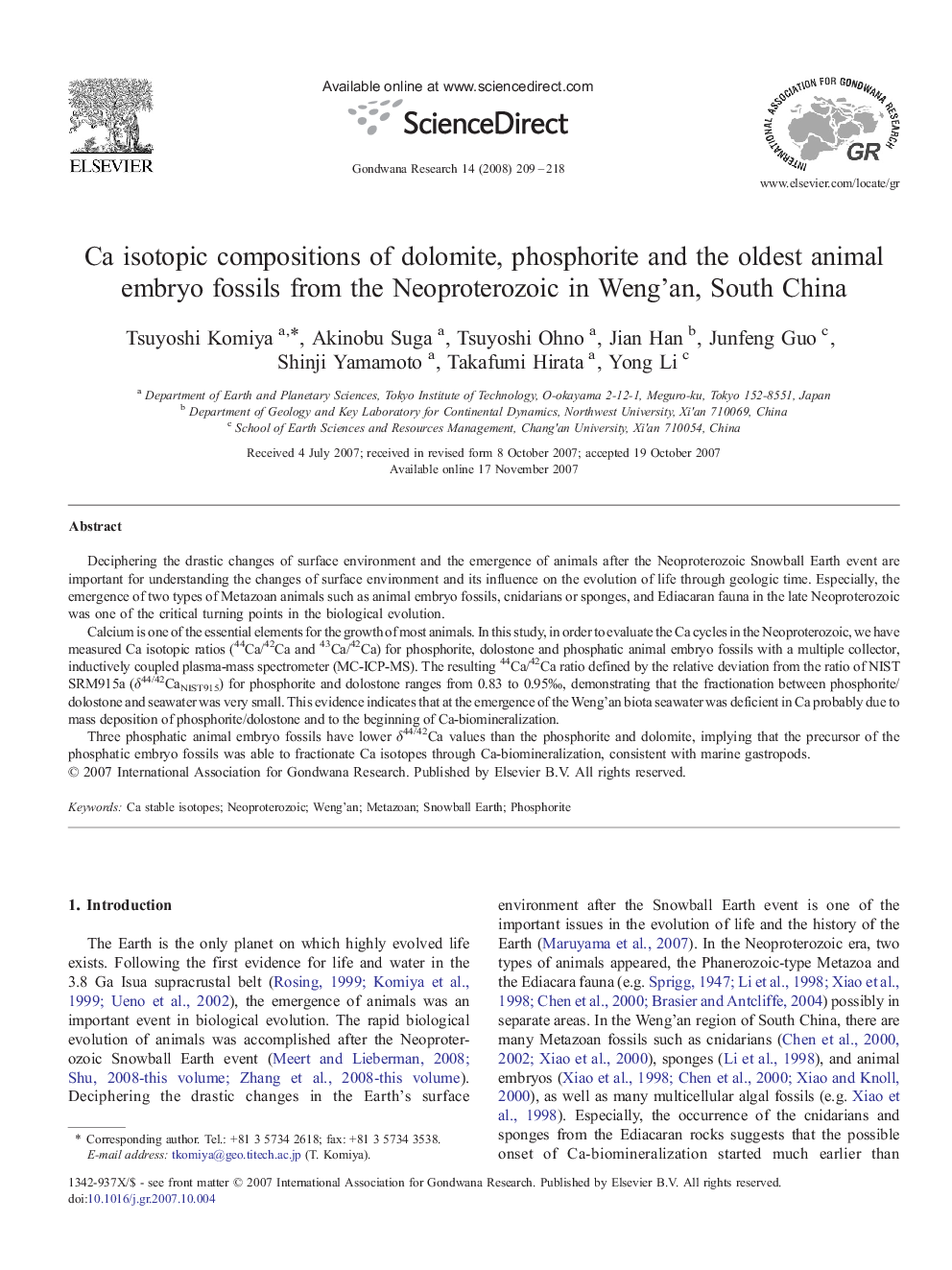| Article ID | Journal | Published Year | Pages | File Type |
|---|---|---|---|---|
| 4727955 | Gondwana Research | 2008 | 10 Pages |
Deciphering the drastic changes of surface environment and the emergence of animals after the Neoproterozoic Snowball Earth event are important for understanding the changes of surface environment and its influence on the evolution of life through geologic time. Especially, the emergence of two types of Metazoan animals such as animal embryo fossils, cnidarians or sponges, and Ediacaran fauna in the late Neoproterozoic was one of the critical turning points in the biological evolution.Calcium is one of the essential elements for the growth of most animals. In this study, in order to evaluate the Ca cycles in the Neoproterozoic, we have measured Ca isotopic ratios (44Ca/42Ca and 43Ca/42Ca) for phosphorite, dolostone and phosphatic animal embryo fossils with a multiple collector, inductively coupled plasma-mass spectrometer (MC-ICP-MS). The resulting 44Ca/42Ca ratio defined by the relative deviation from the ratio of NIST SRM915a (δ44/42CaNIST915) for phosphorite and dolostone ranges from 0.83 to 0.95‰, demonstrating that the fractionation between phosphorite/dolostone and seawater was very small. This evidence indicates that at the emergence of the Weng'an biota seawater was deficient in Ca probably due to mass deposition of phosphorite/dolostone and to the beginning of Ca-biomineralization.Three phosphatic animal embryo fossils have lower δ44/42Ca values than the phosphorite and dolomite, implying that the precursor of the phosphatic embryo fossils was able to fractionate Ca isotopes through Ca-biomineralization, consistent with marine gastropods.
